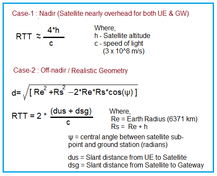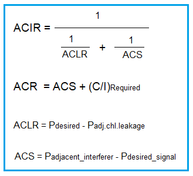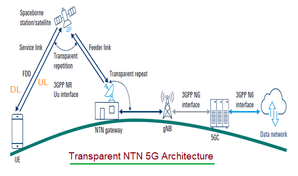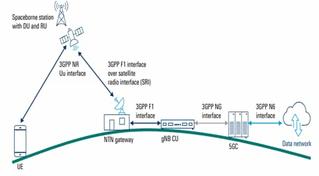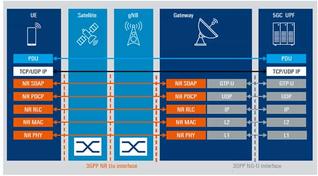5G NTN CNR Link Budget Calculator:Downlink and Uplink
Advertisement
This page provides a CNR Link Budget calculator for 5G Non-Terrestrial Networks (NTN), covering both Downlink from Low Earth Orbit (LEO) satellites to User Equipment (UE) and Uplink from UE to LEO satellites.
What is Link Budget?
A link budget is an accounting of all the gains and losses a communication signal experiences as it travels from a transmitter to a receiver. The goal is to calculate the Carrier-to-Noise Ratio (CNR), which is the final ratio of the received signal power (the “carrier”) to the total noise power. A positive CNR (in dB) is required to successfully demodulate the signal.
Downlink: LEO to UE
EXAMPLE: (Downlink)
-
INPUTS:
- EIRP (dBm) = 78.8
- G/T (dB/K) = -31.6
- k (dBW/Hz/K) = -228.6
- Free Space Path Loss = 159.1
- Atmospheric Loss = 0.1
- Shadow Fading Margin = 3.0
- Scintillation Loss = 2.2
- Polarization Loss = 0.0
- Additional Loss = 0.0
- Bandwidth (MHz) = 30E6
-
OUTPUTS:
- Carrier to Noise Density Ratio, C/N0 (dB) = 81.4
- Carrier to Noise Ratio, CNR (dB) = 6.63
Uplink : UE to LEO
EXAMPLE: (Uplink)
-
INPUTS:
- EIRP (dBm) = 23
- G/T (dB/K) = 1.1
- k (dBW/Hz/K) = -228.6
- Free Space Path Loss = 159.1
- Atmospheric Loss = 0.1
- Shadow Fading Margin = 3.0
- Scintillation Loss = 2.2
- Polarization Loss = 0.0
- Additional Loss = 0.0
- Bandwidth (MHz) = 0.4E6
-
OUTPUTS:
- Carrier to Noise Density Ratio, C/N0 (dB) = 58.3
- Carrier to Noise Ratio, CNR (dB) = 2.28
5G NTN CNR Link Budget Equation or Formula
The figure depicts 5G NTN architecture involving LEO satellite, Gateway and User Equipment (UE). The transmission from UE to LEO satellite is referred to as Uplink, while the transmission from LEO satellite to UE is known as Downlink.
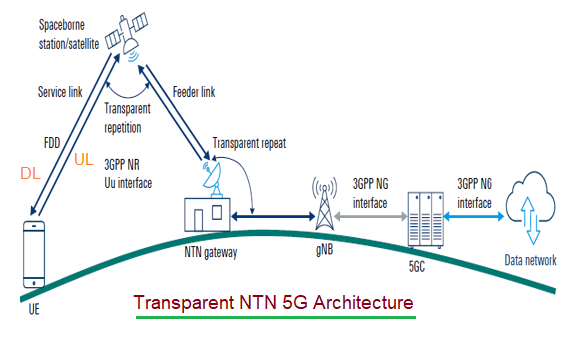
All values in link budget formula are expressed in decibels (dB) or a related logarithmic unit (dBW, dBi, etc.), which is why the calculation involves simple addition and subtraction.

Where,
- EIRP (Effective Isotropic Radiated Power): This is the total power radiated from the transmitting antenna
- G/T (Antenna Gain to System Noise Temperature Ratio): This is a measure of the quality of the receiving system
- k (Boltzmann’s Constant): A physical constant that relates the average kinetic energy of particles
- Free Space Path Loss (FSPL): The loss of signal strength due to the spreading of the wavefront as it propagates through space
- Atmospheric Loss: Losses due to atmospheric conditions such as rain, clouds, and gases
- Shadow Fading Margin: A margin added to account for signal fading due to obstacles blocking the line of sight
- Scintillation Loss: Losses due to rapid fluctuations in signal amplitude and phase caused by small-scale irregularities in the ionosphere
- Polarization Loss: Losses due to mismatches in the polarization of the transmitting and receiving antennas
- Additional Loss: Any other losses not accounted for in the above categories
- Bandwidth: The bandwidth of the signal being transmitted
- C/N0 (Carrier to Noise Density Ratio): The ratio of the received carrier power to the noise power density
- CNR (Carrier to Noise Ratio): The ratio of the received carrier power to the total noise power over the signal bandwidth
Advertisement
 RF
RF